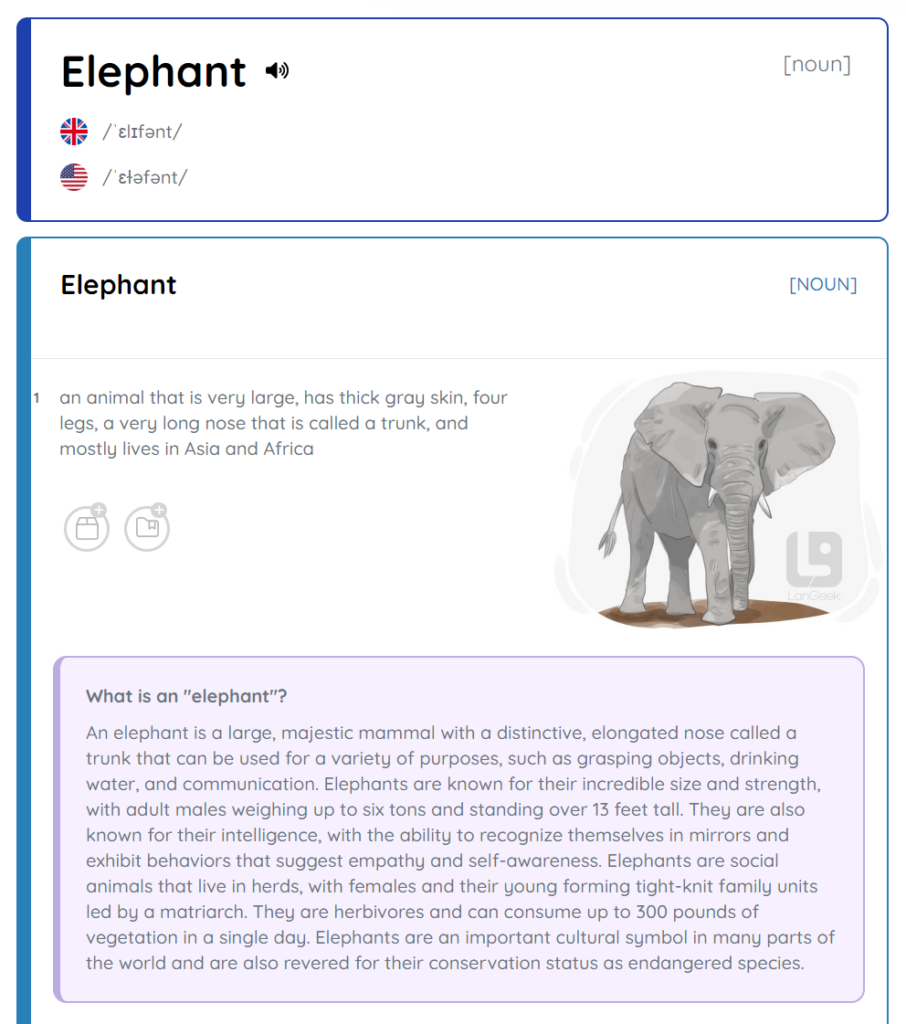In the world of language learning, some words defy simple explanations. These elusive words might refer to abstract concepts—like a unique way of thinking—or tangible real-world objects, such as specific animals or exotic foods.
 But here’s the challenge: if learners can’t grasp the concept beyond the word, they’ll struggle to truly understand and use it. Imagine encountering the word “serendipity.” A dictionary definition might describe it as “finding something delightful by chance.” But that doesn’t capture the magic—the feeling of stumbling upon unexpected joy or a fortunate accident.
But here’s the challenge: if learners can’t grasp the concept beyond the word, they’ll struggle to truly understand and use it. Imagine encountering the word “serendipity.” A dictionary definition might describe it as “finding something delightful by chance.” But that doesn’t capture the magic—the feeling of stumbling upon unexpected joy or a fortunate accident.
To overcome this obstacle, LanGeek employs two essential tools:
- Word Images: Visual snapshots that capture the essence of a word. When you see an image of a sunflower, you connect it to sunny days, growth, and positivity. But images alone may fall short, especially when concepts are intricate or multifaceted.
- Word Descriptions: These concise paragraphs dive deeper. When crafting these descriptions, we aim to cover crucial features of what the word represents. For instance, when describing a fruit, we’ll touch on its color, size, taste, and origin. Imagine reading about a mango: “A tropical fruit with golden-yellow skin, sweet and juicy flesh, and a hint of floral aroma.” Suddenly, the word “mango” becomes more than just a label—it’s a sensory experience.
Think of word descriptions as complementary content—a bridge that helps learners connect with new concepts while mastering a new language. So, whether you’re exploring the nuances of “nostalgia” or unraveling the layers of “resilience,” LanGeek’s word descriptions enhance your language journey.